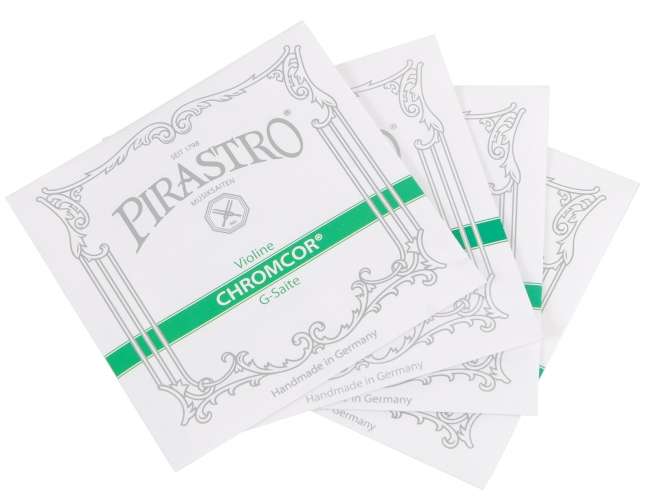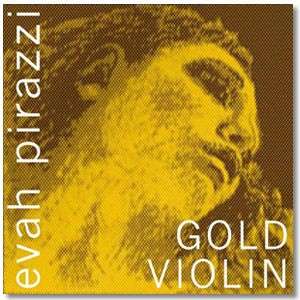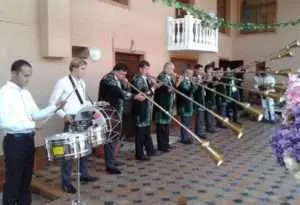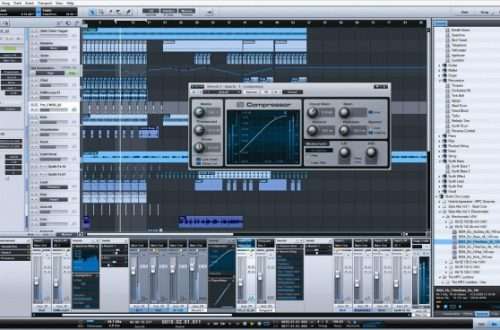
A selection of violin strings for beginners and professionals
Taking care of sound quality and expressive creation should be the musician’s priorities at every stage of learning.

Even a novice violinist practicing scales or exercises on empty strings should aim to obtain a clear and pleasant sound for the ear. However, it is not only our skills that determine the quality of the sound we produce. The equipment is also very important: the instrument itself, the bow, but also accessories. Among them, the strings have the greatest influence on sound quality. Their proper selection and correct maintenance will make learning about sound and the process of its shaping much simpler.
Strings for beginner musicians
The first months of learning are a key time in shaping our reflexes and habits, both motor and auditory. If we practice on poor equipment and use bad strings from the beginning, it will be hard for us to unlearn the manners that would allow us to get the best out of the sound on the wrong instrument. During the first few years of study, the requirements of instrumentalists regarding the creation and extraction of sound are not too high; it is worth, however, that the accessories we use make it easier for us to learn, and not interfere with it.
The most common drawback of cheap beginner strings is the instability of the tuning. Such strings adapt to weather conditions for a very long time and to tension immediately after putting them on. The instrument then requires very frequent tuning, and practicing with detuned equipment makes learning difficult and misleads the musician’s ear, leading to later problems in playing cleanly. Such strings also have a short shelf life – after a month or two they stop quinting, the harmonics are dirty and the sound is extremely unfavorable. However, what hinders learning and practicing the most is the difficulty of producing the sound. The string should already sound from a slight tug on the bow. If this is difficult for us and our right hand has to struggle to produce a satisfactory sound, it may be that the strings are made of the wrong material and their tension is blocking the instrument. In order not to hinder the already complicated learning to play a string instrument, it is worth getting the right equipment.
The best strings in the mid-price range are the Thomastik Dominant. This is a good standard for strings that even professionals use. They are characterized by a solid, based sound and lightness of sound extraction. They are soft to the touch under the fingers and their durability for a beginner will be more than satisfactory.

Their cheaper version, the Thomastik Alphayue, achieves tuning stability a bit faster; they produce a slightly harder sound that is not as rich as the Dominant, but at a price of less than a hundred zlotys per set, it is certainly a sufficient standard for a beginner. The entire range of Thomastik strings is recommendable. It’s a company that produces strings for all price ranges, and their durability never disappoints. If the sound or the physical specifics of a single string do not match, it is recommended to find a replacement instead of replacing the entire set.
Among the single strings, the Pirastro Chromcor is a universal model for the A note. It harmonizes perfectly with any set, has an open sound and reacts instantly to the touch of the bow. For the D sound, you can recommend Infeld Blue, for E Hill & Sons or Pirastro Eudoxa. The G string should be selected in the same way as the D string.

Strings for professionals
The selection of strings for professionals is a slightly different topic. Since every professional plays a violin maker, or at least a manufactory instrument, choosing the right accessories is a very individual matter – each instrument will react differently to a given set of strings. After countless combinations, each musician will find his favorite set. However, it is worth mentioning a few models that delight many professional orchestral musicians, soloists or chamber musicians.
The last number 1 in terms of popularity is the Peter Infeld (pi) set by Thomastik. These are strings with an extremely delicate tension, difficult to obtain for strings with a synthetic core. While sound extraction takes some work, the depth of the sound far outweighs the minor difficulties of the game. The E string is extremely deep, devoid of squeaky tones, the lower notes last for a long time and the tuning stays stable, regardless of the weather conditions.
Another “classic” is of course the Evah Pirazzi set and its derivative, Evah Pirazzi Gold, with a choice of G silver or gold. They sound good on almost any instrument – there is only a question of quite a lot of tension, which has both many supporters and opponents. Among the Pirastro strings, it is worth mentioning the powerful Wondertone Solo and the soft Passione. All these sets represent a very high standard of professional strings. It only remains a matter of individual adjustment.






